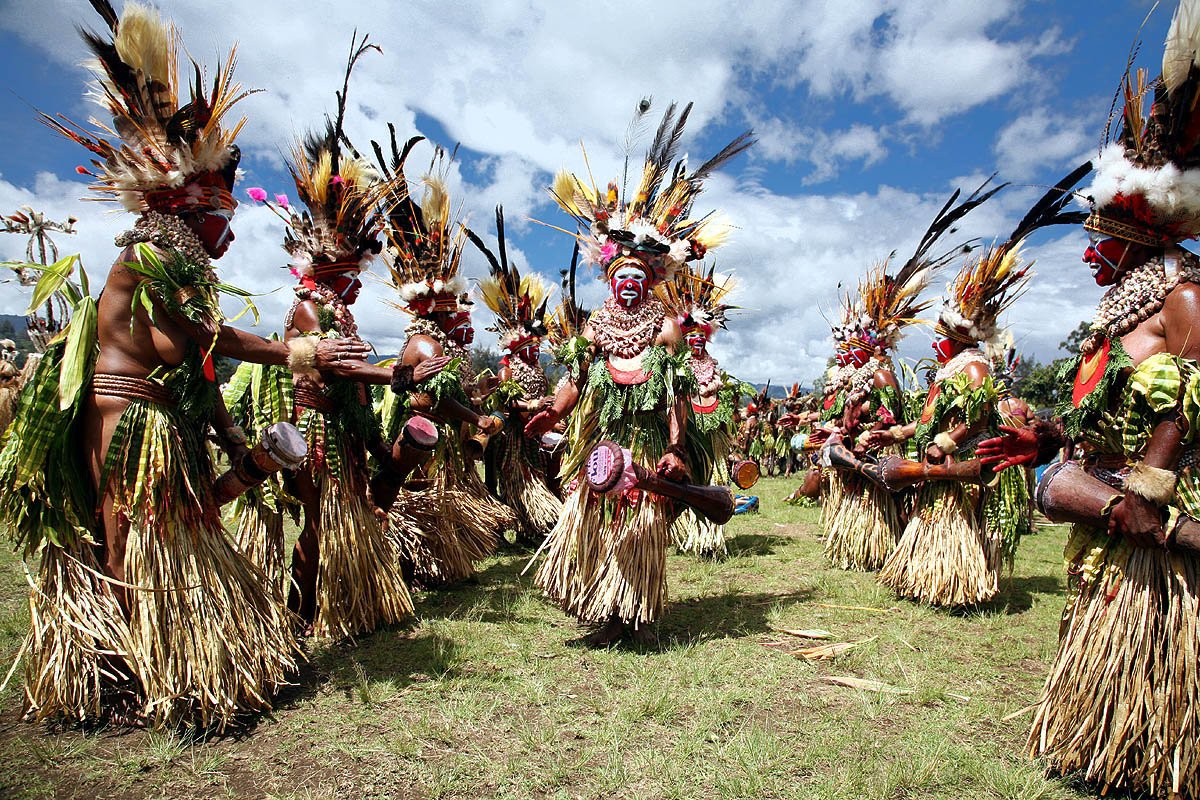Marriage Customs from Around the World
- Mexico
- Sweden
- Fiji
- Kyrgyzstan
- China
- Morocco
- Scotland
- Papua New Guinea
- India
- Scotland
- North Korea
- Armenia
- Niger
- Wales
- United States
- Borneo
- Cuba
- Morocco
- Austria
Table of Contents

When it comes to a marriage the wedding is something we understand very well. It's something normal to see white wedding gowns, cakes and well-thought decor, tuxedoes, limousines, great food, guests in great outfits and exchanging of vows before a registered officiant.
No matter the additions and extras brought in to make the marriage ceremony one of a kind, it's basically something most people in North America, Europe and most of the civilized world today knows about. However, there’re so many other marriage customs from around the world not many people know about, some bordering on the weird.
Mexico: Las Arras
There are many elements to a Mexican marriage. One is the ceremony where the highlight would be the giving of 13 gold coins to the bride by the groom, known as arras, symbolizing Jesus and his 12 disciples. After the vows a flower band, rope or rosary known as a lazo would be wrapped around the neck of the couple to symbolize the eternity of their marriage. Traditionally, the Mexican wedding was characterized by tortillas, beans and spicy rice with the wedding cake made using dried fruit and nuts, rum soaked, as a mariachi band provided music.
-
Learn More:
- http://weddingtraditions.about.com/od/MarriageTraditions/fl/Lassoing-the-Latino-Newlyweds.htm
- https://lifebuzz.com/marriage-customs/
- https://destinationweddingsmexico.wordpress.com/2012/05/24/mexicos-wedding-rituals-and-traditions/
Swedish Marriage
With around 20 hours of the daily sun, the Swedish wedding was traditionally done during the summer months. Some of the highlights included the bride's head crowned with myrtle leaves representing virginity. To ensure she never went hungry or lacked, a gold coin given by her father would put inside her right shoe and a silver coin inside her left shoe from the mother. A 72 hour Smorgasbord would commence with servings of Köttbullar, lingonsylt, and inlagd sill fit for a traditional Swedish wedding. The groom would also provide three gold coins to the soon-to-be bride: one for accepting the engagement, another for marrying him and the third for carrying his baby.
-
Learn More:
- https://www.yourlivingcity.com/stockholm/community/swedish-wedding-traditions-customs-culture/
Fiji: Whale's Tooth
Today a healthy lifestyle and clear vision are often enough to convince a woman you’re worthy of consideration. This is not the case everywhere. In Fiji you must go for something unusual and present it to the father-in-law before you can ask for her hand. In fact, to ask for the hand of a girl a Fiji young man has no choice but present the father-in-law with the tooth of a whale.
-
Learn More:
- https://lifebuzz.com/marriage-customs/
- http://castlecatering.net/vintage-traditions-for-the-modern-wedding-infographic/#.UawHckC1Exx
Kyrgyzstan: The Crying Adage
A crying bride today might mean nothing but in Kyrgyzstan this wasn't always the case. Back in the day there was an old lore that crying during the wedding day leads to the happiest of marriages. As a result parents had no problem consenting to the wedding of a girl who had been kidnapped because she'll be crying, which is a great thing for the wedding. Nonetheless, this practice was legally stopped in 1991.
-
Learn More:
- http://www.nationalgeographic.com/125/photos/explore-weddings/
- http://www.brides.com/wedding-answers-tools/wedding-etiquette/2015/07/wedding-traditions-around-the-world
- http://www.lifebuzz.com/marriage-customs/
China
The Chinese marriage started off with a consultation of an astrologer. In the process a favorable date for the wedding would be found that was calculated from the birth dates of the groom and bride. On the wedding day, the journey to the bride's home would start with the bridesmaids giving him the hardest time of his life. He had to negotiate his way through them by giving money. If the offering was satisfactory he would be allowed to proceed and enter the home. The bride would then serve the groom and her parents with tea as a ritual of their parting. After the feast had died down at night the family and friends taunt the couple as they make their way into their chambers. The guests try to remain inside the room where the couple is to retire as long as possible - until the groom and his bride kick each of the the guests out.
Among the Tujia segment of the Chinese, mandatory weeping is a part of the wedding equation. The soon-to-be-bride must weep at least an hour everyday for a month prior to the wedding. Additionally the family of the bride is encouraged to support her by weeping along.
Rarely does a chicken appear anywhere else in a wedding except on the menu, but in the Daur area of China, a couple intending to marry are required to find a chicken and dissect it. They then have to analyze the liver. If the liver is unhealthy the nuptial plans cannot go on until they find a healthy chicken with a healthy liver before setting a date for their wedding.
-
Learn More:
- http://weddingtraditions.about.com/od/MarriageTraditions/a/Chinese-Wedding-Dances.htm
- http://www.brides.com/wedding-answers-tools/wedding-etiquette/2015/07/wedding-traditions-around-the-world
- http://weddingtraditions.about.com/od/MarriageTraditions/fl/Radiant-in-Red-and-Gold.htm
Moroccan Marriage
Traditionally, the Moroccan marriage wedding takes place as the harvest is coming to an end in the fall. It is typically celebrated on a Sunday. At that time, there was a lot of food to give a give a big wedding feast. The wedding runs for seven days with different parties for women and men. Three days are for the bride where she is prepared through traditional beautification and partying before the marriage on the fourth day. The fifth and sixth days would see more celebrations before the different parties for men and women converged with the bride put atop a cushion and held on high in front of the family and friends. The groom would be hoisted on the shoulders of the men in attendance. The newly married would then be ferried to a specially prepared room where the marriage would be consummated.
Food in the Moroccan marriage involves fertility symbols of chicken and fish being served. Guests devour lamb stew, beef and chicken mixture with spices, onions, apricots, almonds, in addition to huge piles of couscous. The reception would see a zaffa or wedding march ushering the groom and bride in with flaming swords, dancing and music with lots of tambourines, a zither, and drums. It was common for the bride to be specially prepared for the wedding with a milk bath and massage for purification purposes.
Scotland: Elopement at Gretna Green
In 1757 England and Wales brought in strict marriage laws. This prompted young lovers to flee North across the border to Gretna Green where boys of 14 and girls of 12 were able to marry simply by declaring themselves in front of a witnesses. Annually, over five thousands partners come to Elope here each year.
-
Learn More:
- https://en.wikipedia.org/wiki/Gretna_Green

Papua New Guinea: Mt. Hagen Marriage Sings-Sings
The male birds mating cries haven’t gone unheard and have found their way into marriage. In the jungle of Papua New Guinea a tribe exists that clad in feathers as well as painting their bodies to try and woo the girl. The feathers are known as sing sings.
India: Tree Curse Cutting Marriage
Indian marriages are known for being really elaborate and colorful with lots of fanfare and rituals. However, in some areas in the country if a girl is born during a specific astrological timeframe they are considered cursed. The traditional belief is that if they get married they will end up killing their husbands. For the curse to be broken before the woman gets married she has to get married to a tree. Later on the tree is felled, ending the curse.
Scotland: Pelting of the Groom and Bride
Scottish marriages can be a little weird including the pre-wedding part. One of the nastiest traditions involves having the groom and his bride being pelted using food trash such as rotten fish and decaying eggs. The belief among many Scots is that a couple that can endure this nasty pelting is strong, and there marriage will last.
North Korea: Thrashing The Feet
A traditional marriage custom in North Korea involves the beating of the groom's feet using canes and fish on the eve of the wedding. Essentially the custom is meant to show the strong character of the groom. Apparently going down the isle ends up being a painful affair the next day.
Armenia: The Inspiration of the Salty Bread
Single women in Armenia have to consume a chunk of traditionally baked salt bread that's said to inspire a prophetic vision of the male that would marry her. In the dream there's bound to be a guy bringing the girl some water and that's the person she has to get married to.
Niger: Gerewol Mates Festival
After dressing up for the occasion in colorful costumes and traditional makeup, eligible bachelors in Niger start performing before ladies to try and find a mate. After the performance the ladies will then choose the man who mesmerized them the most.
Wales: Wooden Spoon of Love
One of the most significant marks of a real man is the ability to feed his family and ensure they never lack, which is true in almost every culture. This is also the case in Wales where men give their new love interest a carved wooden spoon, as a symbol that he can cater to their needs.
United States: Jumping the Broom
A tradition that's said to have started from the South in the United States, it involved black slaves jumping over some kind of broom as newlyweds symbolizing they have moved over together and ready to start new lives as a married couple. It might be an older tradition but still being performed in the South and other areas, sometimes for fun during a wedding.
-
Learn More:
- https://en.wikipedia.org/wiki/Jumping_the_broom
Borneo: Zero Bathroom Breaks
As a way of bringing newlyweds good luck, a Tribe in Borneo doesn’t allow them to go out of their home after they're married for a day, even to rush for the bathroom.
-
Learn More:
- http://news.nster.com/6262-extremely-strange-marriage-customs-from-around-the-world/page4
Cuba: Money Dance Wedding
While the wedding in Cuba is not religious due to the regime being communist, celebrations don’t stop. Family, friends and guests create a parade of sorts towards the venue of the wedding with dancing and music. The bride's dress is very elaborate and a main element of the Cuban wedding. The more flamboyant the better. It's usually made of satin or silk with ruffles or full skirts. No wedding is really cheap and the wedding usually has a dance where anyone who dances with the bride has to pin some cash on her extravagant dress. This goes to help the newlyweds with their honeymoon arrangements.
Morocco: Way of the Berber Brides
In Moroccan high mountain ranges of the Atlas Berber girls prepare for traditional marriages that usually happen in a mass. The wedding rituals are immense and go for four days. One of the rituals involves the purification of the brides using water fetched from the river.
Austria: Headdress For The Brides
In St. Wolfgang in Austria, women carrying their prayer beads and rosaries appear in churches to complete over 560 years of marriage traditions. The mother of the eldest son usually wears a headdress in the shape of a fan that has been handed down for centuries to give to the bride marrying their eldest son.